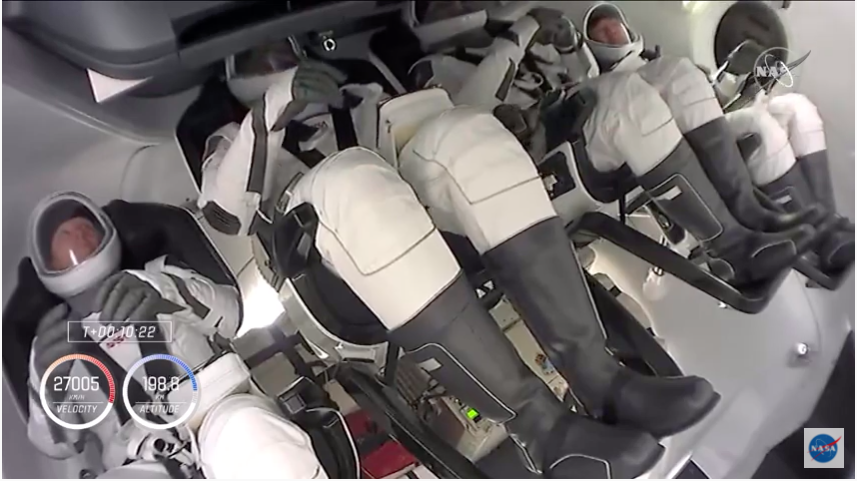Surprisingly similar: Misfolded amyloid beta and tau proteins can also accumulate in the brains of people with Down syndrome. As in Alzheimer’s dementia, these plaques can transfer their misfolding to other proteins – they are prions, as infectious tests with cell cultures have now shown. This may explain why people with trisomy 21 often develop dementia early. Although Alzheimer’s and this Down syndrome have completely different causes of dementia, the neurodegenerative mechanisms in the brain are clearly similar.
more than one alzheimer’s dementia Nerve cells in the brain die, causing the mental abilities of those affected to progressively deteriorate. Misfolded amyloid beta (Aβ) and tau proteins, which build up as plaques and fibers in the brain, are thought to be triggers for the disease. Prosperous And disrupt the communication of nerve cells. By what name are these misfolded proteins now known in Alzheimer’s patients? prion Classified as conformational proteins that can force normal proteins into a single misfolded shape.
Prions also in Down syndrome?
But Alzheimer’s isn’t the only neurodegenerative disease involving misfolded proteins: It’s also common in people with Down syndrome. form of dementia May be caused by such prions. About half of people with trisomy 21 suffer from progressive, Alzheimer’s-like breakdown of brain cells after age 40. And they also form plaques and fibrils from amyloid beta and tau proteins. However, it was previously unclear whether these proteins can transmit their misfolding.
For their study, the researchers, led by Carlo Condello of the University of California, San Francisco, examined in more detail the infectious potential of protein plaques in Down’s dementia. To do this, they isolated amyloid and tau proteins from brain tissue samples from 28 deceased people with Down syndrome and 14 samples from healthy controls. They added the resulting protein solutions to human cell cultures at various dilutions.
also in transmissible misfolding down dementia
Results: “With few exceptions, we measured a strong infectivity of amyloid beta and tau prions in almost all samples from Down patients,” report Condello and colleagues. Misfolded proteins from tissue samples have previously been shown to cause beta-amyloid and tau proteins to fold incorrectly in healthy cell cultures. “This confirms that dementia in Down syndrome is a double prion disease like Alzheimer’s,” the team said.
In another test, researchers compared the infectivity of prions from brain samples from 26 Down’s patients with dementia with those from people with genetic, early-onset Alzheimer’s dementia. Cell culture tests showed comparable transferability rates for misfolded amyloid beta and tau proteins. “Taken together, these data provide clear evidence that Down syndrome, Alzheimer’s and familial Alzheimer’s all produce amyloid beta and tau prions, although they arise from very different causes,” say the researchers.
Explanation for dementia tendency in trisomy 21
The study also confirms a general hypothesis about how Alzheimer’s develops in the brain. Accordingly, misfolded beta-amyloids appear early in the course of the disease and then initiate the formation of misfolded tau prions. “Consistent with this notion, we found solid levels of beta-amyloid prions but negligible levels of tau prions in the two youngest individuals with Down syndrome (19 and 25 years of age),” the scientists report.
The fact that the disease begins with an amyloid prion may explain why people with Down syndrome often develop dementia: the gene for the amyloid beta protein is located on chromosome 21, which people with Down syndrome have in three copies. it happens. As a result, they produce significantly more beta-amyloid than neurotypical people, putting them at greater risk of developing harmful protein plaques later in life.
possibly one day curable
By learning more about the course of Alzheimer’s disease from people with Down syndrome, researchers benefit from one thing in particular: in trisomy 21, higher prion concentrations can be detected at an early age. According to Condello’s colleague Stanley Prusiner, it is often difficult for people with Alzheimer’s to distinguish which changes in the brain are due to age and which are due to prion activity.
According to Condello, learning more about how people with Down syndrome develop Alzheimer’s could help, and thus possibly find a remedy that could prevent the onset of the disease. (Proceedings of the National Academy of Sciences, 2022, DOI: 10.1073/PNAS.2212954119,
Source: University of California-San Francisco, Proceedings of the National Academy of Sciences

Web guru. Amateur thinker. Unapologetic problem solver. Zombie expert. Hipster-friendly travel geek. Social mediaholic.





